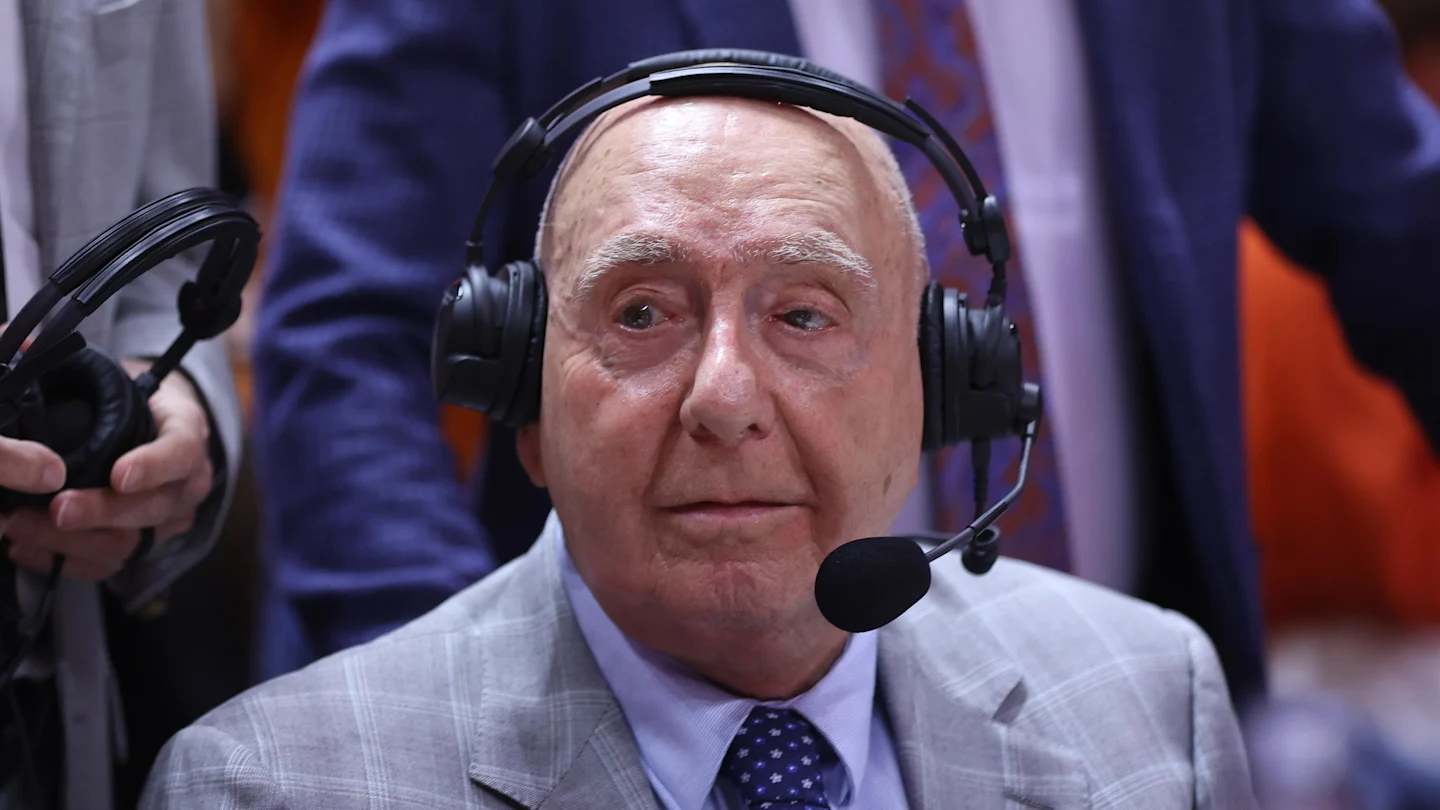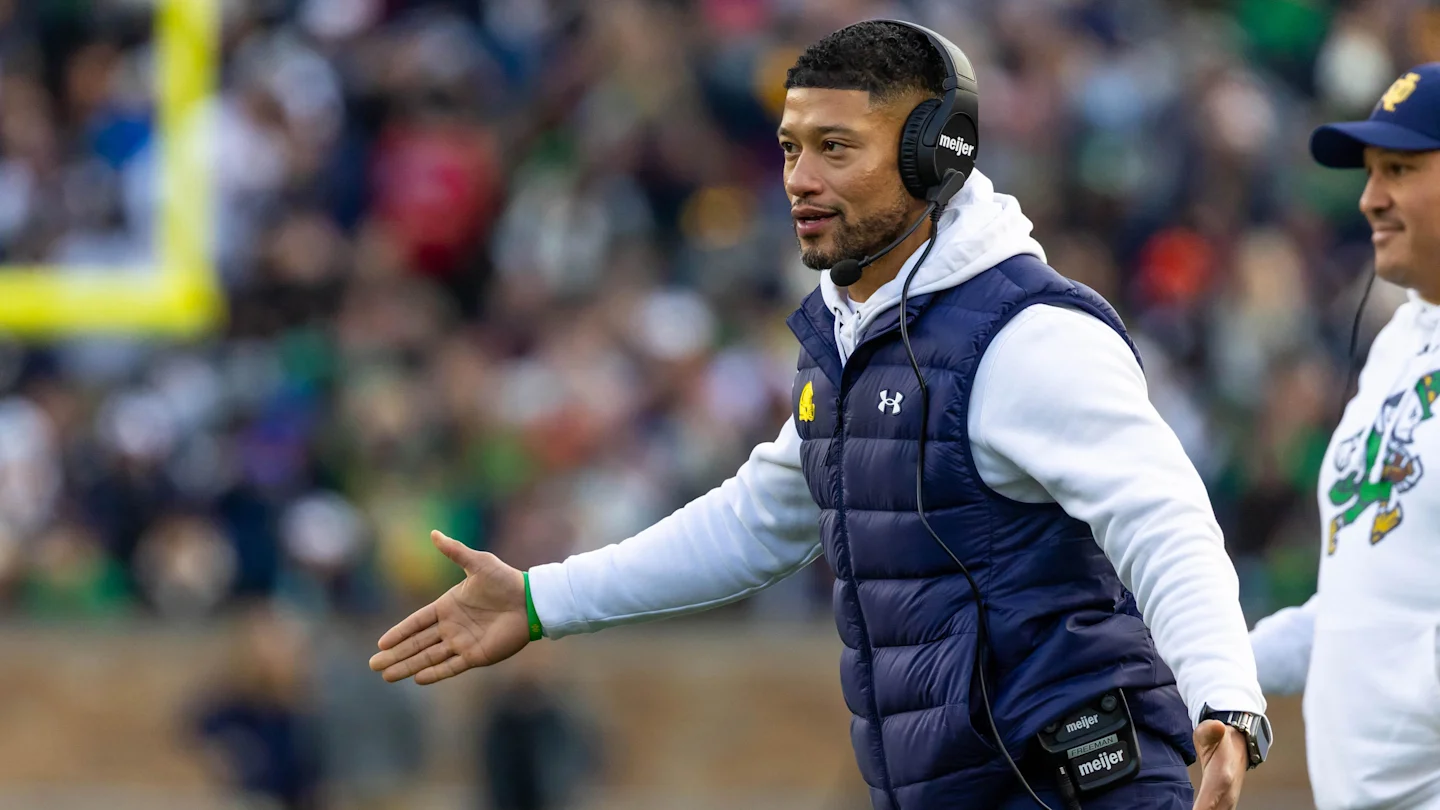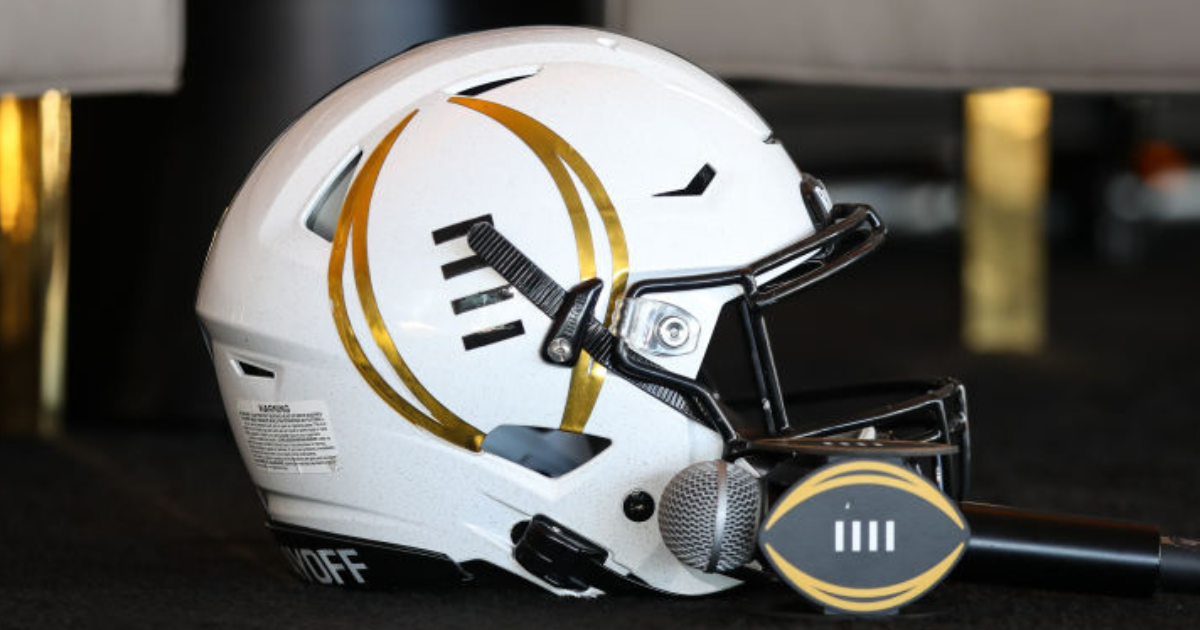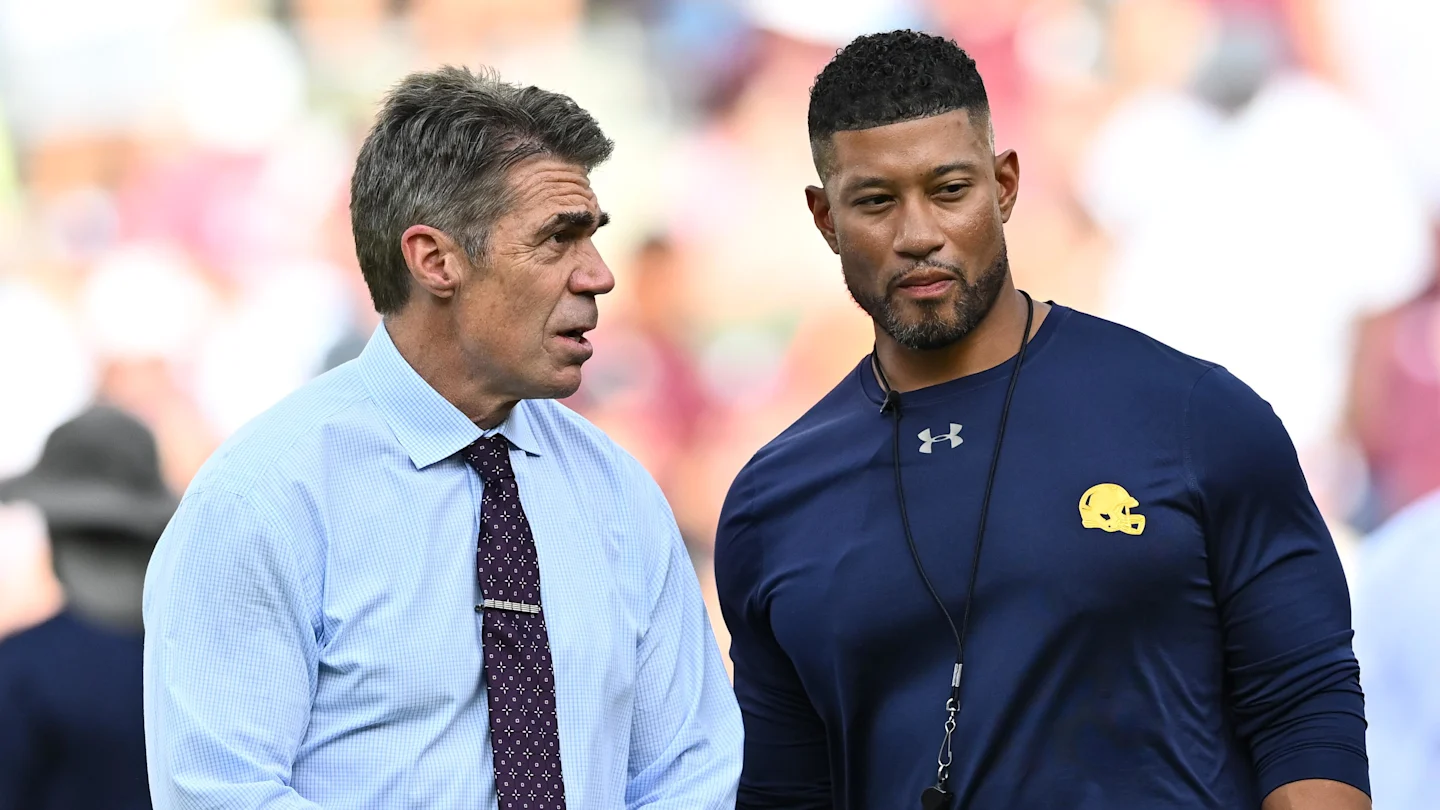NIL
Student project


If you’ve had the chance to attend a high school sporting event, you likely have been met by athletes working hard with the shared goal of victory in their sport.This is because of NIL, or name, image, and likeness. It grants college, and in some other states high school, athletes the right to profit from their personal brand.It wasn’t until July of 2021 that the NCAA altered its rules to allow college students to profit from NILdeals, yet this decision had a grand and almost immediate impact across the nation.“Whatever we do moving forward, it will include discussion on this issue with our school administrators, Board of Directors, staff and leaders of other state high school athletic associations,” Ute said.
Although it is not in Ohio, Williams believes that the existence of NIL in itself is not an issue. He believes that social media’s significance in NIL and sports culture as a whole, however, is a “double edged sword.”
What does NIL mean for high school athletes?
In May 2022, an NIL proposal was put forth by the Ohio High School Athletic Association, but it failed by a margin of 538 to 254 in a vote by member schools.
Despite this, Williams is supportive of the opportunity NIL can create for high school athletes.Williams feels that while social media helps with outreach and shines light on the overlooked or undermined characteristics in an athlete such as hard work, dedication, passion, and immersion into their sport, with the prominence of social media in the lives of children and adults alike, athletes have become aware of the capabilities of social media and have been taking advantage of them.
Soon after, one by one, different states began changing their rules, allowing high school athletes to benefit from their NIL as well.Shawn Williams Jr. is the head coach of the Centennial High School boys basketball team, and the head coach of the All-Ohio Red boys 16U AAU basketball team. He says that even he is noticing that NIL is gradually becoming more prevalent and impactful in the high school scene.
Will NIL ever be approved for Ohio high school students?
“Every year, the referendum voting process shows that our member schools have a voice in this democratic process,” said OHSAA Executive Director Doug Ute. “If NIL is going to enter the Ohio interscholastic landscape, we want the schools to be the ones to make that determination.”Ryan Holmes is a student at Centennial High School. This piece was written for Columbus Journalists in Training, a program sponsored by the Columbus Dispatch and Society of Professional Journalists Central Ohio Pro-Chapter and Columbus Association of Black Journalists for Columbus City Schools students. Ryan was a member of team Writer’s Block.Such has been shown through the gradual upsurge in instances of televised unsportsmanlike conduct in the form of athletes embarrassing one another and ultimately straying from the fundamental and core components of their sports, hungry for media attention.With so much momentum pushing toward NIL benefits being integrated into high school and college athletics, there is a possibility of it passing in the state of Ohio sooner rather than later. However, this decision will ultimately come down to the member schools.
This proposal would have allowed student athletes to sign endorsement agreements as long as their teams, schools and the OHSAA logo were not used, the endorsements did not happen on school property or in school uniform and provided there were no endorsements with companies that do not support the mission of education-based athletics, such as casinos, gambling, alcohol, drugs, and tobacco. To his point, 44 states permit high school athletes the monetization of their NIL, according to NCSA Sports. Ohio is not one of these states. Because the proposal was rejected, Ohio’s student-athletes remain unable to sign endorsement deals without losing their amateur status.What you cannot see in Ohio is them using their athletic talent or persona off the field to make money.
NIL
$2.1 million SEC quarterback announces he’ll forgo NFL Draft, return for 2026

One College Football Playoff program just received some major positive news ahead of their postseason run. One of the many flaws in the current CFB calendar is that players really have to make decisions on their futures before the playoffs are over, since they could be playing well into January — and past the deadline for transferring. Then, there’s the NFL Draft and that process to think about.
Luckily for Texas A&M, they have full assurance that their star quarterback, Marcel Reed, is fully locked in on the Aggie program amid any portal offers or professional attention. As part of an interview with former Heisman Trophy winner Robert Griffin III, Reed confirmed his intention to remain with A&M program next fall, returning for his junior season. On a recent episode of Griffin’s podcast, Outta Pocket, Reed as was asked point-blank whether he is coming back to Texas A&M for the 2026 season. His response:
“I’m coming back,” he said with a head nod. “I’ll be back.” Griffin went on to comment that, from his view, A&M seemed like the ideal home for Marcel Reed.
“I do too,” Reed responded, agreeing that A&M is the perfect fit. “I mean, I got offers after my freshman year, ” he added. “I thought that this was the best place to be. I didn’t think there was any reason to leave Texas A&M. I have the job and it’s mine to lose. But like, there’s no reason for me to leave.”
Marcel Reed stats, NIL valuation

The good folks at On3 put together a formula for calculating a player’s NIL and roster value based on real reporting on player compensation plus social media exposure and overall talent level. According to their esteemed metric, Marcel Reed checks in with a $2.1 million NIL evaluation. That puts him No. 13 among current college football players and No. 17 among all college athletes.
As a starting quarterback for one of the top 10 teams in the nation this season, you wouldn’t think there’s much reason for Marcel Reed to transfer away from Texas A&M. However, after the stellar year he put together, NFL scouts certainly have him on the radar.
Across 12 regular season games, Reed threw for just under 3,000 yards and will almost certainly eclipse that milestone in the postseason. He also tossed 25 touchdowns vs. just 10 interceptions and added another six touchdowns as a runner to give him more than 30 on the year. Reed’s rushing tally is currently 466 yards. Easily one of the best dual threat quarterbacks in the country, Reed projects to return to a contending Aggie squad in 2026 as a Heisman Trophy frontrunner and potential NFL first round pick,.
More on College Football HQ
NIL
Dick Vitale finds College Football Playoff selection committee far from awesome, baby

Dickie V knows football
Dick Vitale is well-known and loved as a passionate broadcaster and follower of college basketball. His boundless enthusiam and endless catch phrases have dominated college basketball for several decades. But Vitale pretty clearly knows the gridiron as well, and directed some harsh comments on Sunday to the College Football Playoff selection committee. The topic of discussion was Notre Dame, long a Vitale favorite, as he acknowledged 11 family members who have graduated from the school.
Notre Dame’s rough situation
Notre Dame was ranked as the first team out of the College Football Playoff. The two biggest points of contention for the Irish and their fans are that three-loss Alabama remained ahead of them despite a 28-point loss in the SEC championship game, and that Miami– consistently ranked behind Notre Dame in the CFP weekly rankings– somehow jumped them in the final week despite neither team playing a game.
Vitale speaks out
Vitale shared a video to social media with comments he directed straight toward the CFP selection committee.
I’m really having a tough time. Every Tuesday for five consecutive weeks, you post on ESPN, the teams you think, the top 12 that would be eligible at that time to qualify for the Playoffs. Every week, EVERY, not two of the weeks, but all five weeks, you had Notre Dame over Miami. You had Notre Dame in there every week. How logically do they drop out on the last week, when they’ve done nothing in terms of losing a game during that period? Miami lost two games to unranked teams. I have a real tough time with that…. How do you explain the five weeks of having Notre Dame there and then bouncing them? They did zilch in terms of anything in causing that to happen. They didn’t lose a game. They blew out everybody they played, and the bottom line is they got a raw deal. They got a raw deal. Those kids belong in the Playoffs.
Dick Vitale
Irish reaction
Despite the emotional pitch of his video– and Vitale acknowledges that he’s a fan of the Irish– it’s hard to argue with Vitale’s fundamental talking points. Notre Dame pretty clearly felt the sting of CFP exclusion, as the Irish then turned down non-CFP bowl berths, indicating that for the Irish, the season ended up as CFP or bust. But even if the Irish are outside the Playoff, they do have one of the most notable voices in college sports indicating that their CFP exclusion is a difficult-to-justify stance that wrongs an excellent team.

NIL
Every college football team that declined their bowl game on Sunday

Years ago, schools basically cued in line to plead for a spot in a post-season bowl game. Of course, that was an era before every breakfast cereal, motor oil, or obscure mortgage company was sponsoring its own personal bowl game. But Sunday emphasized a growing trend with a number of teams saying ‘thanks, but no thanks’ to bowl berths on Sunday. The final count included at least 10 teams that turned down bowl berths.
The denials sprang from a variety of potential reasons– from pouting over exclusion from the College Football Playoff to teams not wishing the dive into postseason play in the midst of coaching changes to teams that had given up hope at a bowl and moved on with the offseason. But Sunday’s massive exodus of teams NOT playing in bowls certainly made some college football history.
The Wrath of the Irish
Notre Dame’s bowl denial will probably draw the most attention. The Irish finished one spot out of the College Football Playoff, and accordingly decided that they would pass on the gamut of lower bowls. Notre Dame was purportedly offered a spot in the Pop-Tarts Bowl to play the team ranked behind them in the CFP rankings, BYU, but turned it down flat.
All of college football (and even some college basketball celebrities) weighed in on the propriety of the Irish bowl declination, but it’s a massive move that could reverberate throughout future bowl seasons.
— Notre Dame Football (@NDFootball) December 7, 2025
Two Big 12 Coaching Shifts
Kansas State and Iowa State each turned down bowl invitations. In both cases, there are coaching transitions underway. Iowa State lost Matt Campbell to Penn State and is replacing him with Jimmy Rogers. Kansas State saw Chris Kliemann retire and Collin Klein replace him.
Despite the business excuse, the Big 12 made it clear that the decision was not a popular one at the league level. Both schools were fined $500,000 for turning down bowl bids.
The Big 12 fines Kansas State and Iowa State $500,000 each for opting out of a bowl. pic.twitter.com/TLQcgkB6a1
— Ross Dellenger (@RossDellenger) December 7, 2025
Bowl Denial Dominoes (or Sunday Choas for the Birmingham Bowl)
While the NCAA had exactly the number of teams with six or more wins that it needed to fill the bowl vacancies, these three teams declining bowl berths caused the bowls to have to dip into the pool of 5-7 teams. A multitude of 5-7 teams declined bowl bids before Appalachian State finally completed the bowl picture by agreeing to play Georgia Southern in the Birmingham Bowl.
At least seven teams were reported to have turned down last-minute bowl invites off of 5-7 seasons. The list includes Florida State, Auburn, UCF, Baylor, Rutgers, Temple, and Kansas. The 11th hour bowl chaos led to more than a few jokes online. While the 82nd bowl berth was finally filled, at least 10 teams passed on postseason play on a memorable Sunday.
We interrupt for a Public Service Announcement: if you’re a football team (must have at least 11 players) & would like to play in a really cool bowl game & be on ESPN vs. Georgia Southern, please show up at Birmingham’s Protective Stadium by 1 pm Dec. 29th kickoff. Thank you
— Brett McMurphy (@Brett_McMurphy) December 8, 2025
NIL
Are Ohio companies interested in NIL deals with high school athletes?
Dec. 8, 2025, 6:05 a.m. ET
Fred Horner bleeds black and orange.
The owner of Advanced Industrial Roofing is a Massillon football booster and member of the Sideliner program, an initiative where community members act as mentors for varsity players, providing personal guidance and support.
He’s willing to help out Washington High School athletes any way he can. But don’t expect his company to start handing out lucrative name, image and likeness deals to high school students now that the agreements are legal in Ohio.
NIL
The College Football Playoff Committee took the messy route, but still landed on the right bracket

If you want to hammer the College Football Playoff Committee for taking the scenic route on the way to the final bracket reveal, go ahead. That wasn’t the path many of us would have taken, especially if the goal were to set a clear expectation of what the final CFP bracket would look like.
Through more than a month of nationally televised CFP rankings shows, the Committee insisted on keeping Notre Dame slotted ahead of Miami. It didn’t matter that Miami possessed a head-to-head win and an identical record. The Committee told us repeatedly that it felt Notre Dame was better. As a result, we believed that’s what the people in that conference room in Grapevine, Texas, would do at the end.
They didn’t. On Sunday, when the final bracket featured Miami and not Notre Dame, it caused confusion and frustration. No, it was a shock. People couldn’t fathom how two idle teams could be flipped on Selection Sunday when neither team played during championship weekend.
We’ll get into why that happened later, but here’s the important thing: It’s not about the journey, it’s about the destination. And the destination was unequivocally correct. The games still matter and the notions of what we — or the people on the Committee — think would happen in the future didn’t come into play, even if we spent the last month thinking they would.
Miami couldn’t have been left out of the bracket while maintaining the integrity of the games. Had the CFP Committee included Notre Dame and not Miami, what they think would have taken priority over what happened on the field. Notre Dame and Miami’s resumes were similar enough that the result of the game had to matter the most. It couldn’t be ignored. It wasn’t.
If it wound up being ignored, that would have thrown the selection process into a chaotic world where the Committee members could veer from the guardrails — the games – and do whatever they want. So for at least another year, we get to live in a world where the CFP Committee leaned on the results of the games more than personal notions.
If you want to get into why the CFP Committee made this harder on themselves, that’s fine. They could have ranked Miami higher from the get-go, which would have stripped away all of the shock and confusion Notre Dame fans are feeling right now. The Committee made this harder for no reason.
So what’s the explanation for how the jump happened?
“Not until they really got to close proximity — side by side — with the move with BYU were we able to evaluate just those two teams. We always had someone between them,” CFP Committee chair Hunter Yurachek said on ESPN’s broadcast.
It’s all nonsense. How the CFP Committee could ignore the result of that game until its final deliberations doesn’t really make sense. If you’re questioning the process, please do it. There are plenty of holes to poke. But poking the process after the results are right is much better than poking the process after unjust results.
That brings us to Alabama, which got in despite losing to Florida State at the beginning of the year and getting blown off the field by Georgia in the SEC title game Saturday. Why didn’t Notre Dame and Miami go? How did Alabama get in still? Well, it all came back to who you beat.
Yes, Alabama had one more loss than Notre Dame. But its strength of schedule — which ranked No. 11 in comparison to Notre Dame at No. 42 and Miami at No. 44 — carried the day. Contrary to the propaganda the SEC dispersed last year about being penalized for playing tougher schedules, Alabama was actually forgiven for the extra loss because it beat Georgia during the regular season. That’s the benefit of playing in a tougher conference. You get a mulligan.
People have reason to be upset because of the unorthodox path the CFP Committee took.
But leaving Miami out in favor of Notre Dame would have been a miscarriage of justice. Feelings would have taken precedence over results, which ultimately means seasons could be simulated and teams could be slotted based on data.
This CFP Committee, more than others in the past, felt erratic. It felt like this Committee could have done something unconventional. But at the end of the road, it did what was right.
Even if you’re angry, be happy about that.
NIL
Major changes predicted after controversial College Football Playoff decision

Whatever decisions the College Football Playoff selection committee eventually make, there seems to always be some form of controversy, and the 2025 bracket was no different after a consequential decision between Miami and Notre Dame.
With that controversy in mind, ESPN college football announcer Chris Fowler believes the playoff format and selection process could undergo yet more reform in the future.
More change could be on the way
“This is a bracket that’s going to be talked about forever. And not just because Notre Dame got excluded. But because of the framework that created the choices that the committee had to make,” Fowler said on Sunday’s selection show.
Fowler pointed to the “tweak” the College Football Playoff made a year ago, when it ended the confusing distinction between seeding and ranking, and believes another structural alteration could follow after this year’s dilemma.
“There’s going to be something more than a tweak going forward because all of a sudden, inclusivity, which most people in the sport think is a pretty good idea…
“Inclusivity sounds good until teams like Notre Dame and Texas and Vanderbilt get squeezed out. Then people have a serious problem with it.” he said.
Notre Dame felt it coming
Schools take a brave face in public when they have a chance to make the playoff, but the reality behind the scenes is often a little more nerve-racking.
Fowler added: “This is one we’re going to talk about for a long, long time. If you’re Notre Dame, you’re crushed. They were worried about this.”
“I know they projected confidence, but there was a lot of unease on the part of Marcus Freeman and others because they saw them drop last week and now in consecutive weeks without playing, they have dropped in the rankings. And it ends up costing them despite a 10-game winning streak to finish the season.”
Miami over Notre Dame was the right call
Notre Dame had been ranked ahead of Miami in the College Football Playoff rankings until Selection Day itself, when they swapped the Irish for the lower-ranked Hurricanes at the most crucial moment.
Still, despite whatever criticism there may be around the selectors’ decision-making process or timing, what happened on the field still should trump everything else, the ESPN veteran says.
“I have no problem with Miami getting in based on the head-to-head, even though it was early in the season,” Fowler said.
“They won that game at the line of scrimmage… That was real. It was a late field goal that won it, but it still matters. And I think has to matter, or there’s no incentive to schedule any kind of meaningful non-conference game.
“That’s not the committee’s job to protect that, or the committee’s job to protect with a sentimental eye [the] conference championship games, but those are also in danger, as we know, going forward.”
Read more from College Football HQ
-

 Rec Sports2 weeks ago
Rec Sports2 weeks agoFirst Tee Winter Registration is open
-

 Rec Sports2 weeks ago
Rec Sports2 weeks agoFargo girl, 13, dies after collapsing during school basketball game – Grand Forks Herald
-

 Motorsports2 weeks ago
Motorsports2 weeks agoCPG Brands Like Allegra Are Betting on F1 for the First Time
-

 Sports3 weeks ago
Sports3 weeks agoVolleyball Recaps – November 18
-

 Motorsports2 weeks ago
Motorsports2 weeks agoF1 Las Vegas: Verstappen win, Norris and Piastri DQ tighten 2025 title fight
-

 Sports2 weeks ago
Sports2 weeks agoTwo Pro Volleyball Leagues Serve Up Plans for Minnesota Teams
-

 Sports2 weeks ago
Sports2 weeks agoUtah State Announces 2025-26 Indoor Track & Field Schedule
-

 Sports2 weeks ago
Sports2 weeks agoSycamores unveil 2026 track and field schedule
-

 Motorsports2 weeks ago
Motorsports2 weeks agoRedemption Means First Pro Stock World Championship for Dallas Glenn
-

 NIL1 week ago
NIL1 week agoBowl Projections: ESPN predicts 12-team College Football Playoff bracket, full bowl slate after Week 14






















































